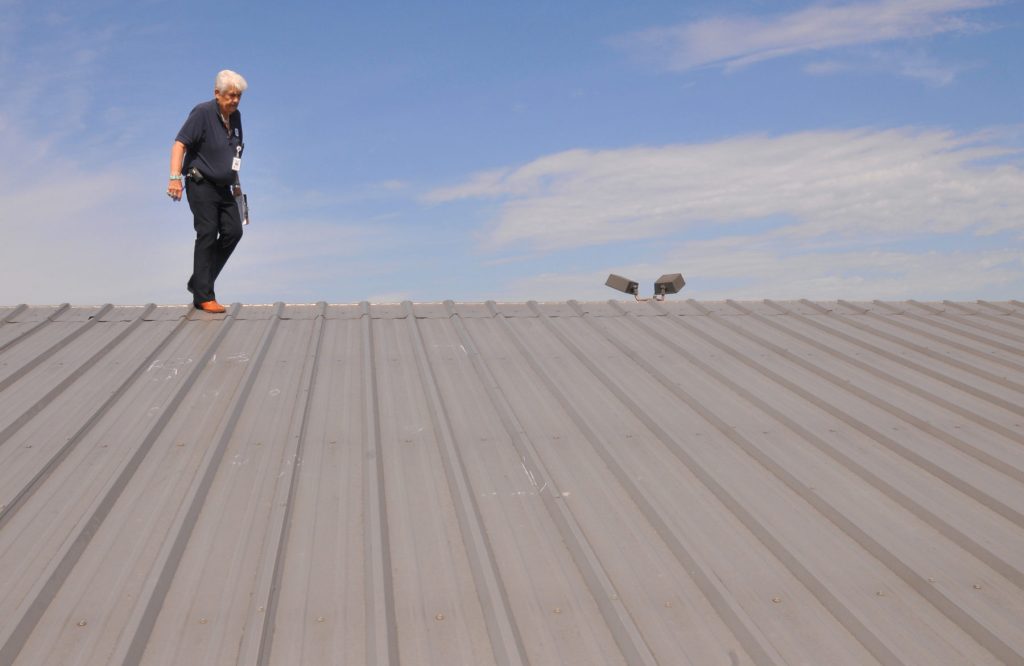
Storms are a common occurrence in Florida, bringing strong winds, heavy rain, and sometimes hail. While your roof is designed to protect your home from these elements, it can suffer damage in the process. After a storm, it’s crucial to inspect your roof for signs of damage that might require immediate repair. In this article, we’ll explore the top five signs that your roof needs attention after a storm and provide you with the next steps to take to ensure your home remains safe and secure.
Why Post-Storm Roof Inspections Are Essential
Even if your roof appears intact after a storm, hidden damage could lead to significant problems down the road. A thorough inspection can help you catch issues early, preventing leaks, structural damage, and costly repairs. Regular post-storm inspections are an important part of maintaining your roof’s longevity and your home’s safety. For more detailed guidelines on what to look for, refer to the National Roofing Contractors Association (NRCA).
Sign 1: Missing or Damaged Shingles
One of the most obvious signs of storm damage is missing or damaged shingles. High winds can lift shingles off your roof, while hail can cause them to crack or dent. If you notice any bare patches where shingles used to be, or if you find pieces of shingles scattered around your property, your roof likely needs repair.
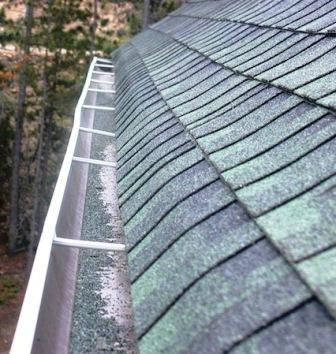
- Next Steps: Contact a professional roofing contractor to replace the missing or damaged shingles as soon as possible. If left unattended, these areas can become entry points for water, leading to leaks and further damage. Explore our roofing services for expert help in shingle replacement.
Sign 2: Granule Loss on Shingles
Shingle granules are the small, sand-like particles that coat the surface of asphalt shingles, providing protection from UV rays and adding fire resistance. After a storm, check your gutters and downspouts for an accumulation of these granules. Significant granule loss can indicate that your shingles are nearing the end of their lifespan and are more vulnerable to future damage.
- Next Steps: If you notice excessive granule loss, it might be time to consider a roof inspection. Depending on the severity, you may need a full roof replacement to ensure continued protection. Learn more about our roof replacement services to determine if this is the right option for you. Ready.gov offers detailed advice on preparing for hurricanes and the impacts they can have on your home’s roof.
Sign 3: Leaks or Water Stains Inside Your Home
Water stains on your ceiling or walls are a clear sign that your roof has been compromised. These stains are often the result of leaks caused by storm damage, which can worsen over time if not addressed. The longer water is allowed to infiltrate your home, the more extensive the damage can become, potentially leading to mold growth and structural issues.
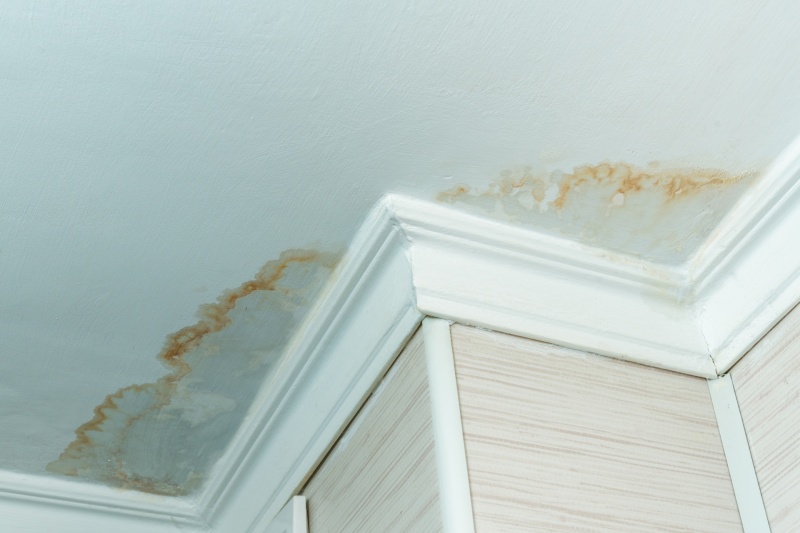
- Next Steps: If you spot any water stains, schedule an emergency roof repair immediately. Addressing leaks quickly can prevent further damage and costly repairs. To understand how storm damage can impact your insurance claims, visit the Insurance Information Institute (III).
Sign 4: Damaged or Missing Flashing
Flashing is the metal material installed around roof features such as chimneys, vents, and skylights. Its purpose is to direct water away from these vulnerable areas. After a storm, flashing can become loose, bent, or completely detached, leaving gaps where water can seep in.
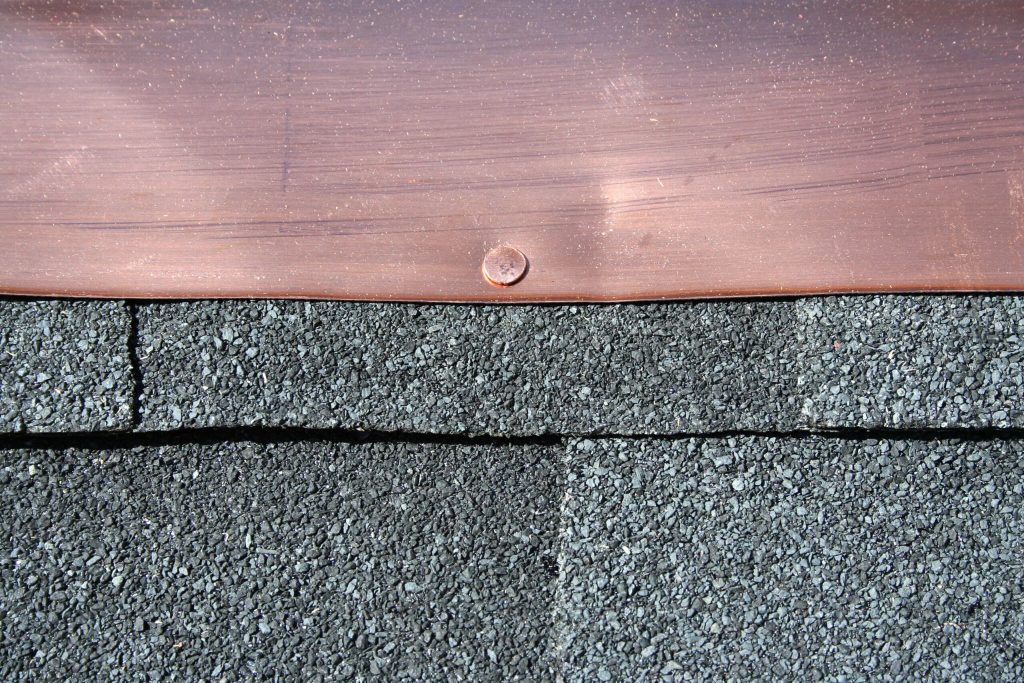
- Next Steps: Inspect your roof’s flashing after a storm to ensure it’s still intact and securely fastened. If you notice any damage, have it repaired or replaced as soon as possible to prevent leaks. The Federal Emergency Management Agency (FEMA) offers additional resources on protecting your home from storm damage.
Sign 5: Sagging Roof Deck
A sagging roof deck is a serious issue that often indicates structural damage beneath the surface. This could be due to prolonged water exposure, storm damage, or the weight of debris accumulated on the roof. A sagging roof not only looks unsightly but also poses a significant safety risk.
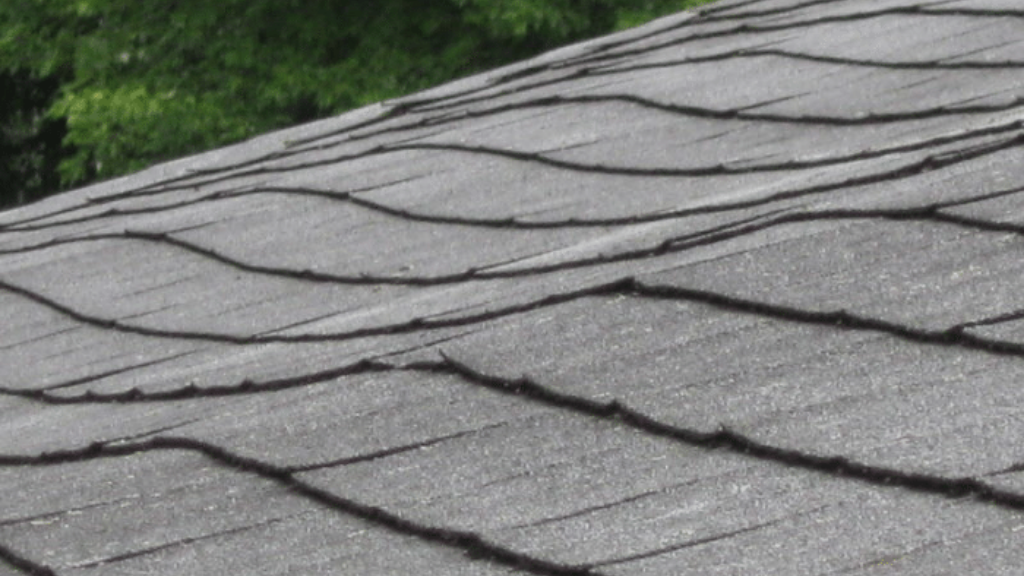
- Next Steps: If you notice any sagging areas on your roof, contact a professional roofing contractor immediately. The roof may require extensive repairs or even a full replacement to restore its integrity. Learn more about our experience and commitment to quality roofing by visiting our About Us page.
What to Do After Discovering Roof Damage
If you find any of these signs of storm damage, it’s important to act quickly. Delaying repairs can lead to more extensive damage, higher costs, and potential safety hazards. Here’s what you should do:
- Document the Damage: Take photos of the damage as soon as you notice it. This documentation will be useful for insurance claims and when communicating with your roofing contractor.
- Contact Your Insurance Company: Review your homeowner’s insurance policy to understand what’s covered. Most policies cover storm damage, but the specifics can vary. Contact your insurance company to file a claim and discuss the next steps. The Insurance Information Institute (III) can help you navigate this process.
- Schedule a Professional Inspection: Even if the damage appears minor, a professional inspection can uncover hidden issues that need to be addressed. Reach out to a reputable roofing contractor to schedule an inspection as soon as possible. Explore our roofing services for assistance with inspections and repairs.
- Get Repairs Done Promptly: Don’t wait to repair your roof. The sooner you address the damage, the less likely it is to worsen. Whether it’s a minor repair or a complete roof replacement, timely action can save you money and stress in the long run. If you need help assessing or repairing storm damage, contact us today to get started.
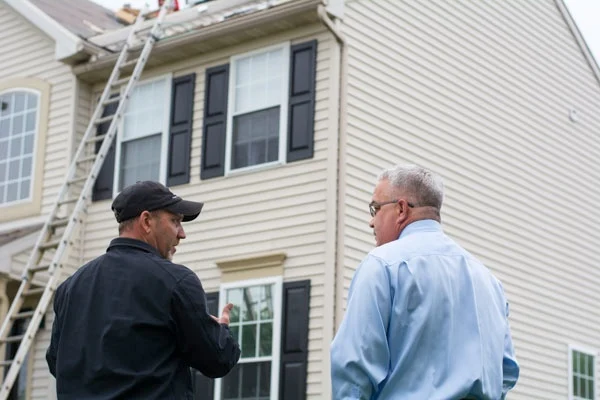
Conclusion
After a storm, your roof might be in worse shape than you think. By knowing the signs of storm damage—like missing shingles, water stains, and sagging roof decks—you can take quick action to repair and protect your home. Remember, the sooner you address roof damage, the better you can prevent further issues and maintain the safety and integrity of your home. If you need help assessing or repairing storm damage, contact us today to get started.
FAQs
- How soon after a storm should I inspect my roof?
- It’s best to inspect your roof as soon as it’s safe to do so. Quick action can prevent further damage and ensure timely repairs.
- Can I repair storm damage myself?
- While minor repairs might seem manageable, it’s advisable to hire a professional to ensure the job is done safely and correctly.
- How do I know if my insurance covers storm damage?
- Review your homeowner’s insurance policy and contact your insurance provider to clarify coverage specifics and deductibles.
- What should I do if I find multiple signs of damage?
- If you find multiple signs of damage, contact a roofing contractor immediately for a comprehensive inspection and repair plan.
- Can storm damage shorten my roof’s lifespan?
- Yes, storm damage can significantly reduce your roof’s lifespan if not repaired promptly, leading to premature aging and failure.
